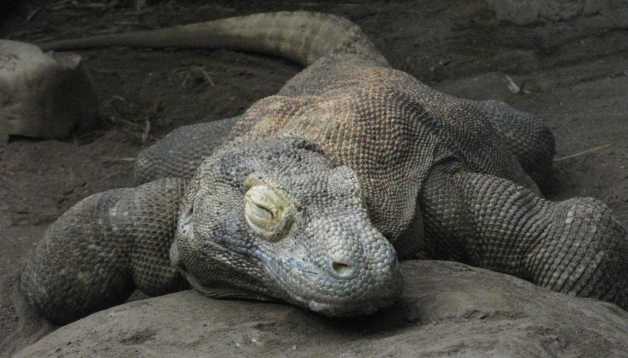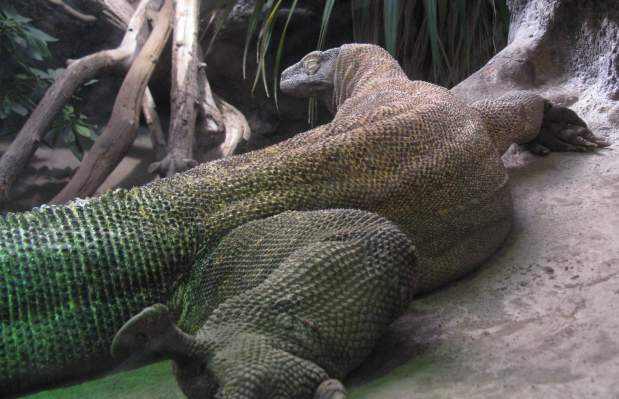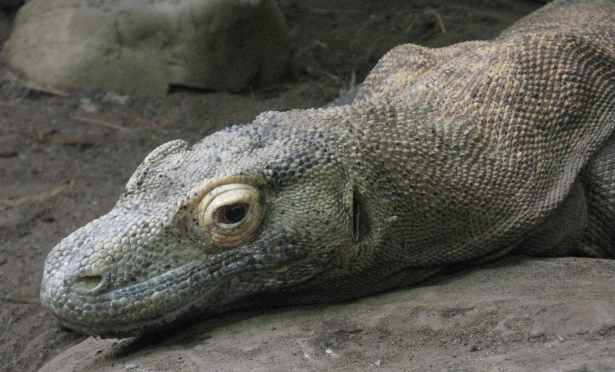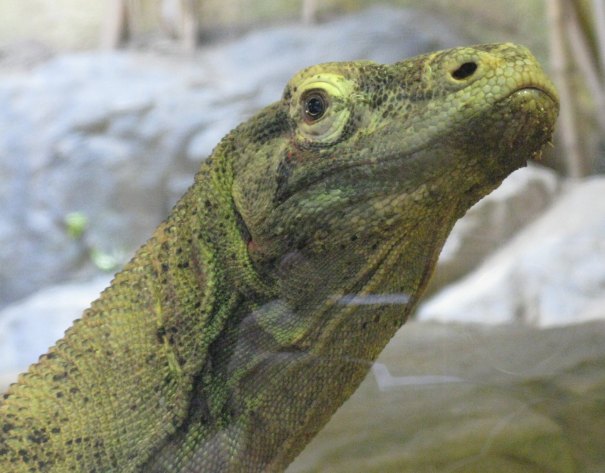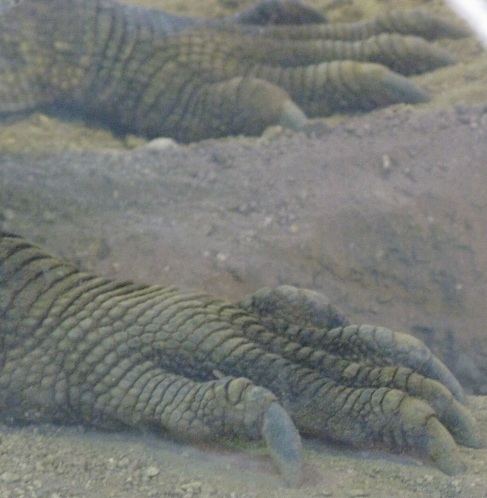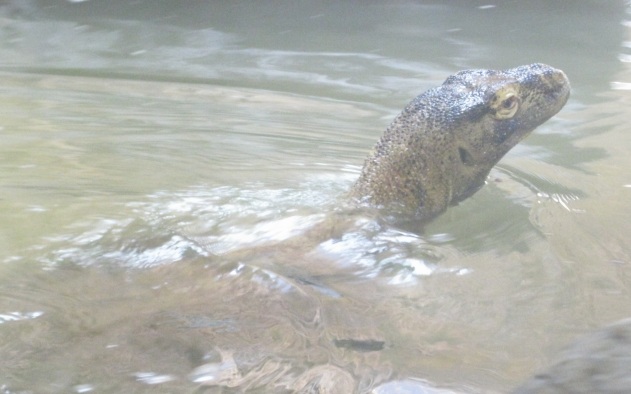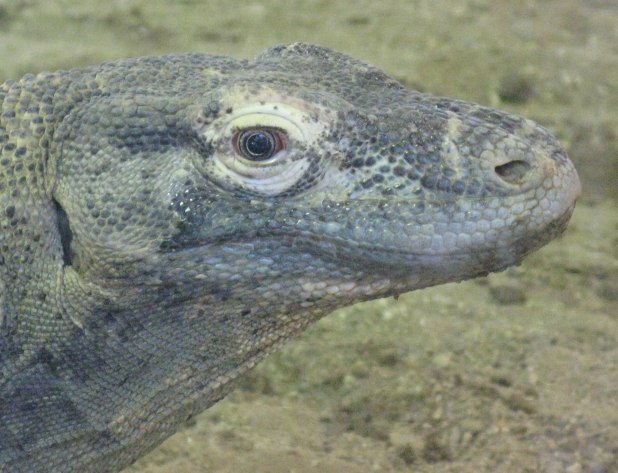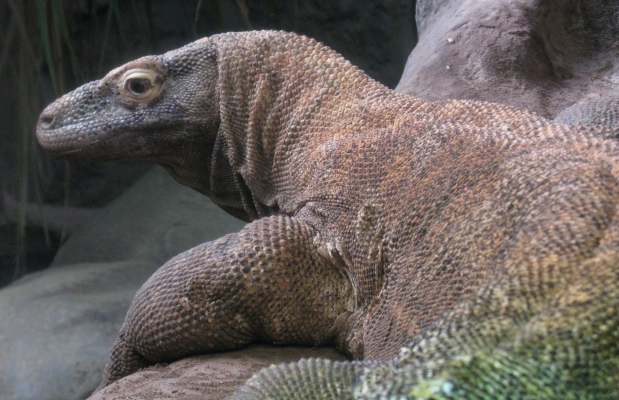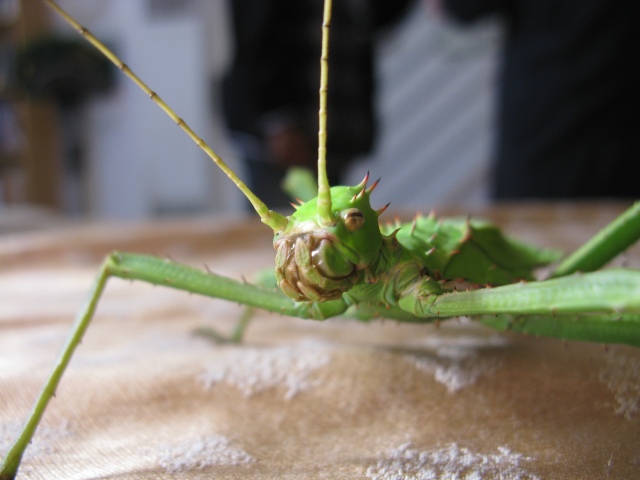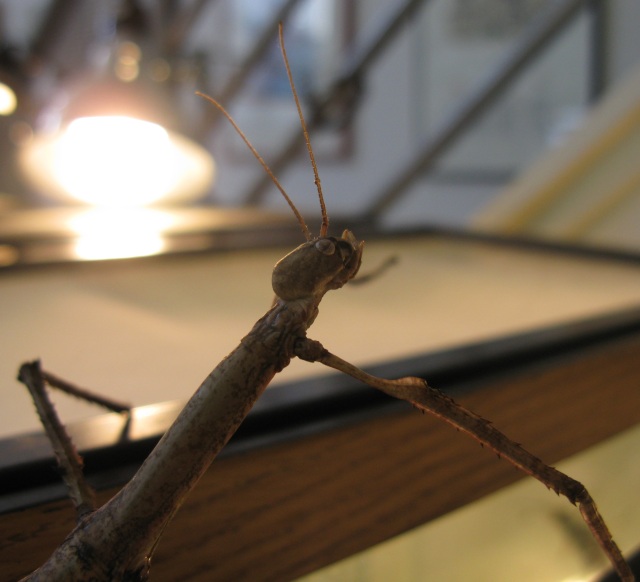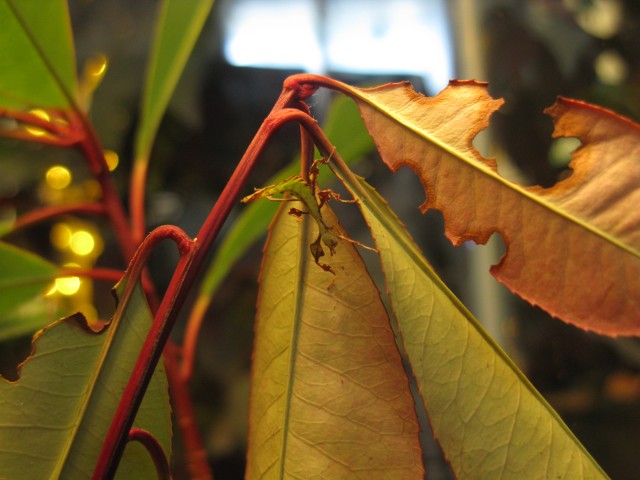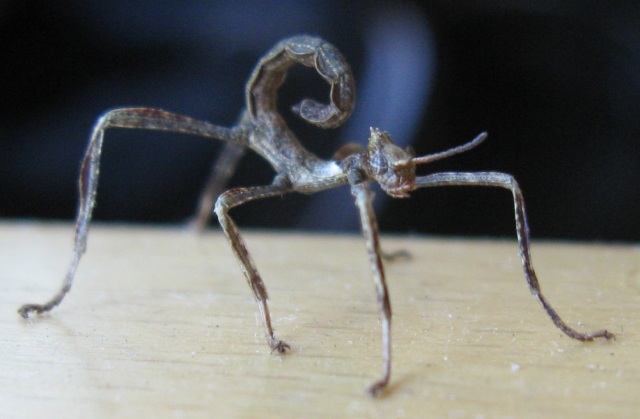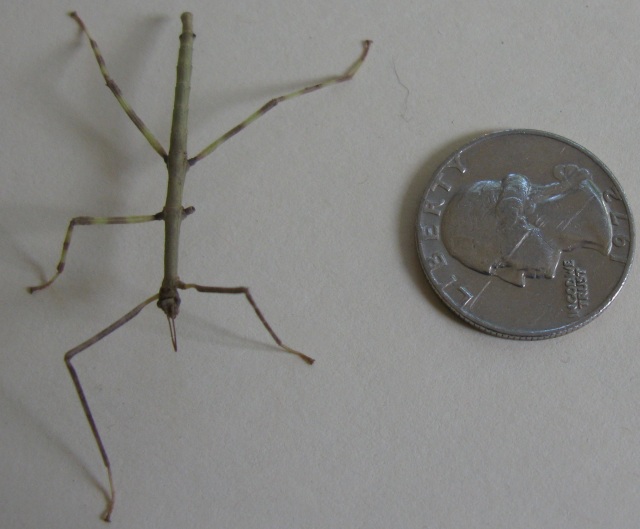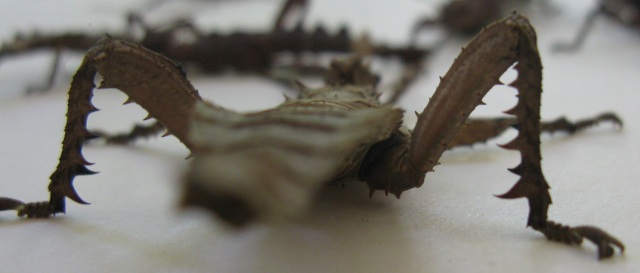Komodo dragons are crazy cool lizards, with no natural enemies. They’re only found on a few small islands in Indonesia and most of what we know about them we’ve only learned in the last 30 years. They are the largest living lizards in the world, averaging 150 lbs (68kg) and 8 ft. (2.4m) in length, though they’ve been known to grow as much as 300 lbs and 10 ft. in length. And actually, since they can eat 80% of their body weight in one sitting (!!), a male that just finished a large meal can be weighed at more than 550 pounds. This big lizard had big ancestors. Their largest ancestor was the Megalania prisca, which grew to over 23 ft and 1,400 pounds and was the largest venomous animal to have ever lived (as far as we know).
Predominantly ambush predators, these lizards can hunt animals 5 times larger than themselves and 15 times their weight, including deer and water buffalo. Although they appear toothless, because their gums cover their teeth until they’re ready to bite, they have 60 inch-long teeth and deliver deeper and more damaging wounds than a crocodile. When they eat, their gums tear and bleed. The blood mixes with the saliva and makes a slime that allows them to swallow their food whole. Every part of the prey is eaten, even hooves, and it all gets dissolved in their strong stomach acids. The lizard may have to sleep for up to an entire week while its food digests after eating a big meal.
Oh and they’re venomous. What’s that you say? No they’re not? You learned a long time ago that the Komodo dragon has bacteria in its mouth and it’s a bacterial infection that causes the slow, agonizing death of the prey? Yeah, so did I. It wasn’t until 2009 that scientists discovered that they are venomous. They have venom glands in their mouth and venom causes their prey to continuously bleed. They die from blood loss and infection.
Nothing is safe from a Komodo dragon-not even Komodo dragons. They are cannibalistic, with healthy dragons eating the young, old or injured dragons. Young Komodo dragons make up about 10% of an adult dragon’s diet. For this reason, when young dragons hatch, they dash up into the trees to avoid being eaten. But many won’t make it. Birds, snakes and other Komodo dragons-sometimes even their mothers- will catch them before they can reach the safety of the tree. They have to be cautious and quick when they come down for water and sometimes they may roll around in feces to mask their odor from adults.
One reason why they eat their own young may be that they need to in order to reach their huge size. The young eat insects, and small lizards and mammals, but there are very few medium sized animals on the islands. Those that are there were introduced and so weren’t always around. Perhaps eating their own young gets them to the next size level where they can go after bigger animals.
These predators have excellent senses. They have a forked 16-inch tongue that works like a snake’s tongue-flicking it out into the world, they can taste/smell with their tongue. They can find carrion more than 5 miles away. They are covered in hard scales, each one with a sensory plaque for increased sensitivity. On their face and feet, each scale has 3 or more sensory plaques, further heightening their sensitivity. They can see in color. We used to think they were deaf, but that was disproved by a zookeeper that trained one to come when it heard her voice. Now we know that they only hear sounds in the low range of pitches. They can even distinguish between different human voices.
Male Komodo dragons are territorial. Females and young can inhabit their territory, but males are only allowed to pass through when the visitor is tracking prey. They will fight other males to breed, standing on their hind legs and balancing on their tales. After the loser falls, he will lie still while the winner scrapes his claws along the loser’s back and tail as a sign of dominance.
Females use their claws to dig egg chambers. Since Komodo dragons will raid each others’ nests, the mother dragon will dig mazes of false tunnels to confuse any would-be egg raiders.

Komodo dragon claws, front foot. Females use their claws to dig egg chambers. Males will scrape them across defeated Komodos. Image taken at Los Angels Zoo.
Females will also guard their nests for up to 3 months. She’ll leave once the rainy season hits, since the chances of her eggs being disturbed are substantially less.
In 2006, we discovered another surprising fact about Komodo dragon reproduction. The females can be parthenogenetic! In London’s Chester Zoo, a female produced 8 offspring without ever having met a male, giving us our first glimpse at this cool adaptation.
Komodo dragons can live 50 years in the wild and up to 9 months without water. They are strong swimmers, able to travel between islands and dive to depths of 15 feet.
People in Komodo and Rinca take precautions to avoid attacks from Komodo dragons. They don’t wander into the forests or grasslands alone and they never antagonize or approach the dragons. They’ve also had a long-held belief that if they feed the old dragons that could no longer hunt, throwing them old deer heads and hides and fish heads and guts, it was sort of a peace offering and it kept them and their children safe from getting attacked. Younger dragons sometimes ate the food as well. There was only 1 human death recorded in 30 years (since records started) from 1965-1995.
However, in 1995 Komodo park authorities banned the feeding of Komodo dragons, which environmentalists thought would make them grow lazy and forget how to hunt themselves. They also outlawed the dogs, which are considered an invasive species, which have been used to keep the dragons out of the villages. Since these things have been put in place, several people have been killed by Komodo dragons since 2000 and some dragons have recently begun to enter school buildings and homes. That’s right. Imagine a giant 8-foot venomous lizard walking down your school hallway.
It may surprise you to know that King Kong was actually based on an expedition to collect Komodo dragons. The best trappers had extreme difficulty and the dragons were escaping. The movie producer Merian C. Cooper took the story and changed the giant lizard to an ape.
Komodo dragons appear in a few other movies as well. In The Freshman they used an Asian water monitor to be a “Komodo dragon.” In Komodo Dragon, the dragons are computer generated. It turns out that real Komodos don’t do well with handling.
You can also find cool Komodo dragon art, like this awesome statue that lives at the Woodland Park Zoo in Seattle, that kids are allowed to climb on.

A Komodo dragon statue in Woodland Park Zoo, Seattle. There are brightly colored tiles along its back. Children are allowed to play on it.
Alright, one last cool tidbit on this really long post. At a Singapore Zoo, they’ve used acupuncture to treat a sick dragon. It’s thought to have been successful.
Have one last photo of these beautiful animals.


